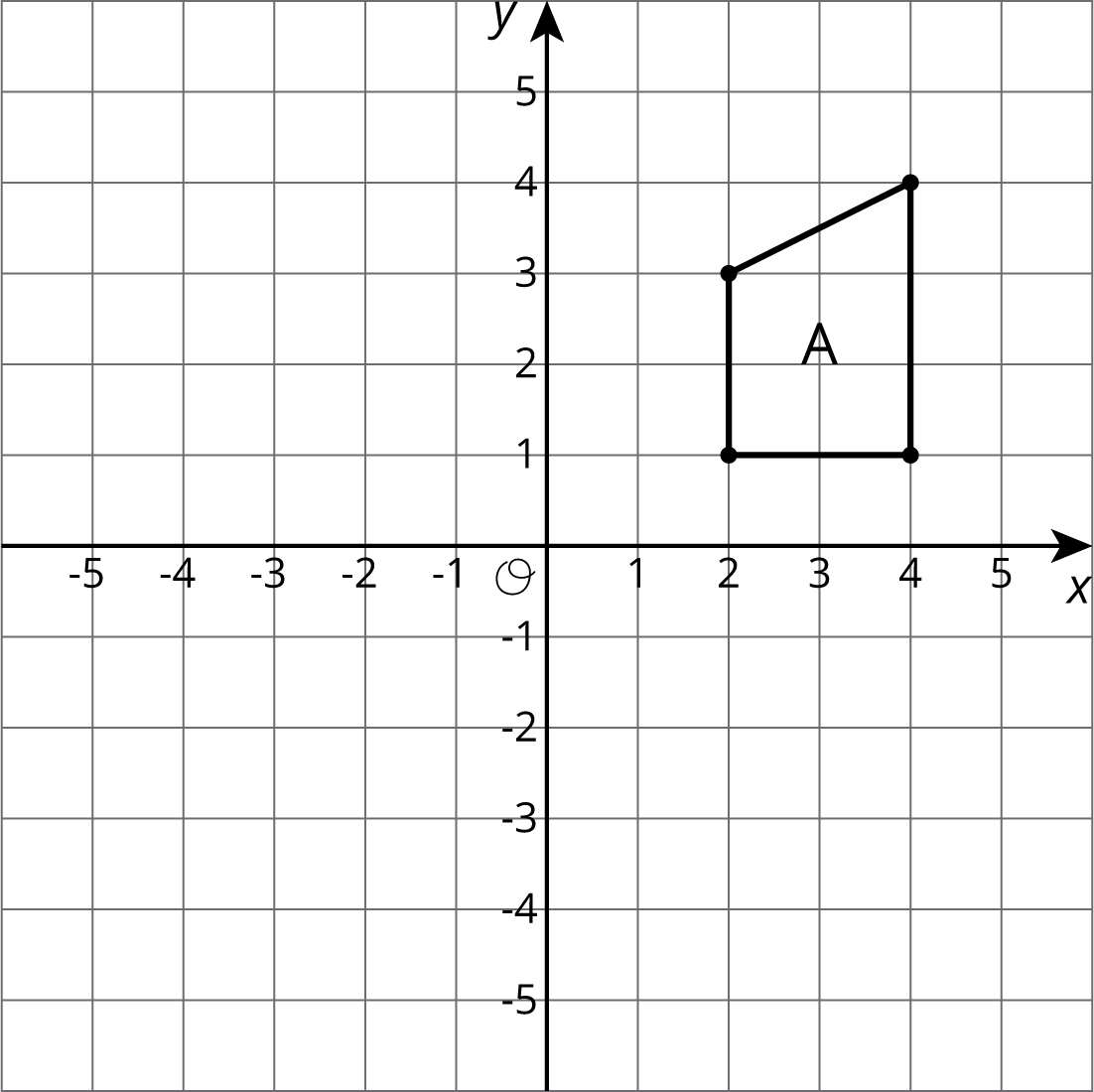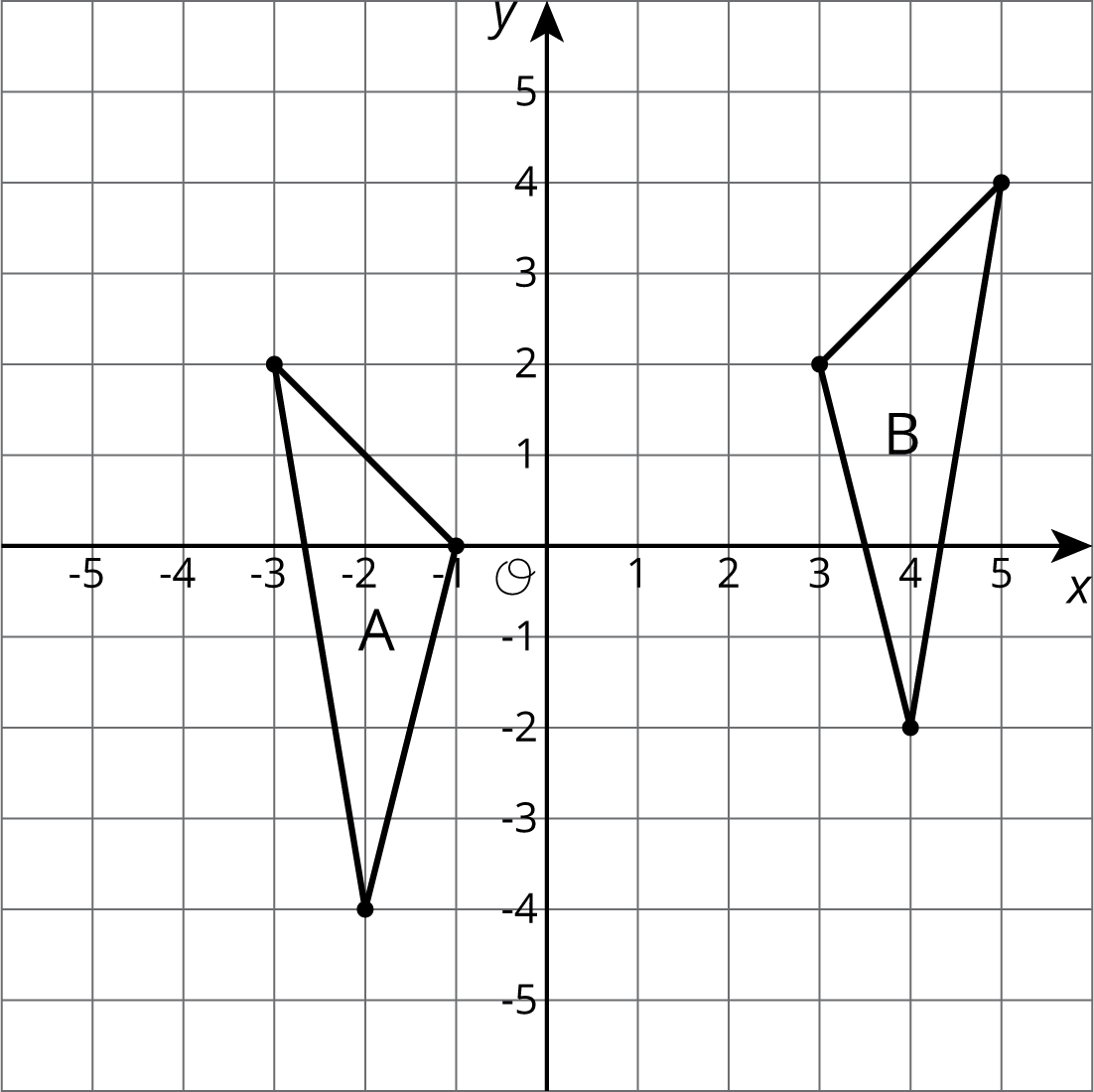Lesson 6
Describing Transformations
Problem 1
Here is Trapezoid A in the coordinate plane:

- Draw Polygon B, the image of A, using the \(y\)-axis as the line of reflection.
- Draw Polygon C, the image of B, using the \(x\)-axis as the line of reflection.
- Draw Polygon D, the image of C, using the \(x\)-axis as the line of reflection.
Solution
For access, consult one of our IM Certified Partners.
Problem 2
The point \((\text{-}4,1)\) is rotated 180 degrees counterclockwise using center \((\text{-}3,0)\). What are the coordinates of the image?
A:
\((\text{-}5,\text{-}2)\)
B:
\((\text{-}4,\text{-}1)\)
C:
\((\text{-}2,\text{-}1)\)
D:
\((4,\text{-}1)\)
Solution
For access, consult one of our IM Certified Partners.
Problem 3
Describe a sequence of transformations for which Triangle B is the image of Triangle A.

Solution
For access, consult one of our IM Certified Partners.
Problem 4
Here is quadrilateral \(ABCD\).

Draw the image of quadrilateral \(ABCD\) after each transformation.
- The translation that takes \(B\) to \(D\).
- The reflection over segment \(BC\).
- The rotation about point \(A\) by angle \(DAB\), counterclockwise.
Solution
For access, consult one of our IM Certified Partners.
(From Unit 1, Lesson 2.)